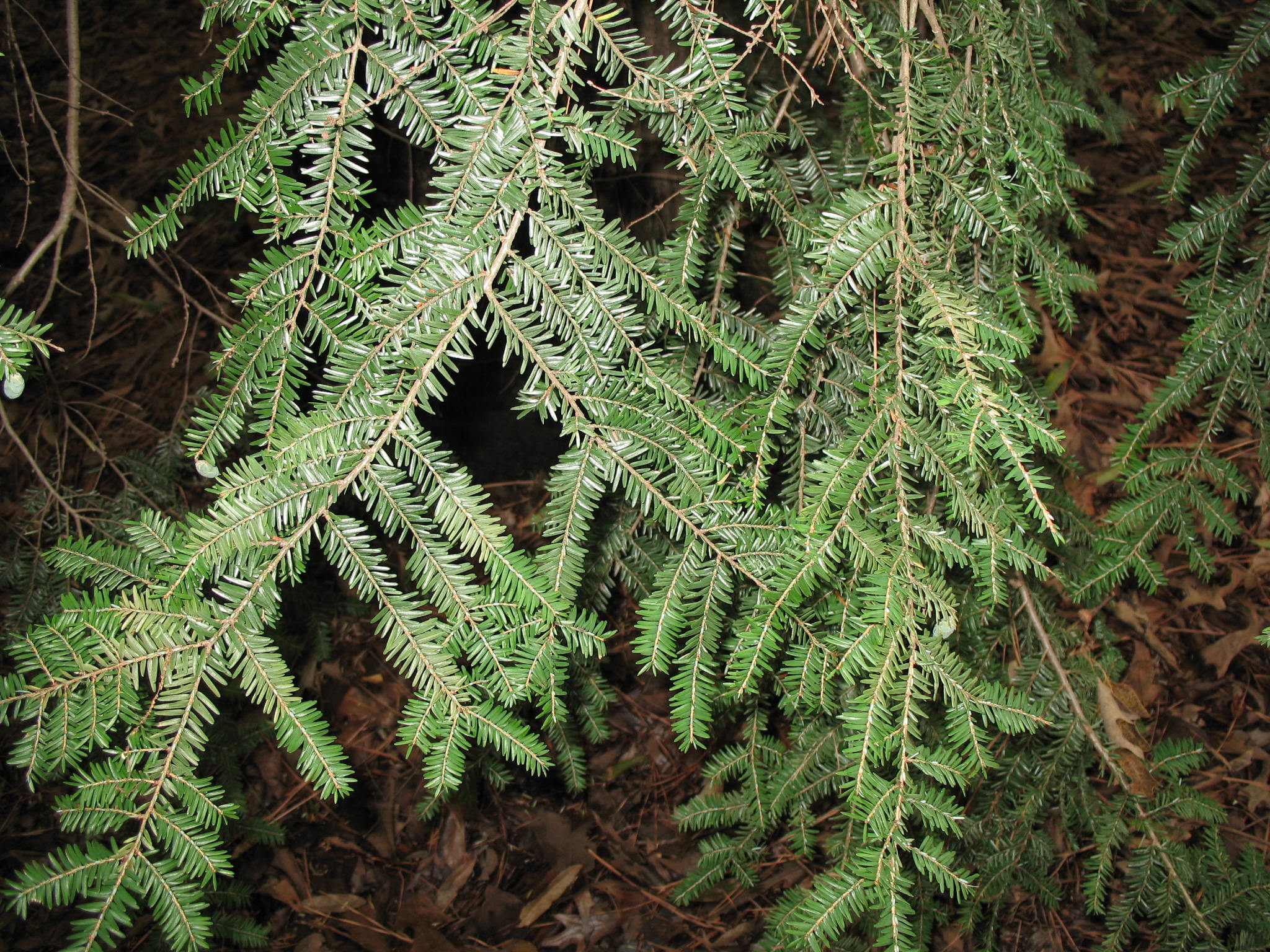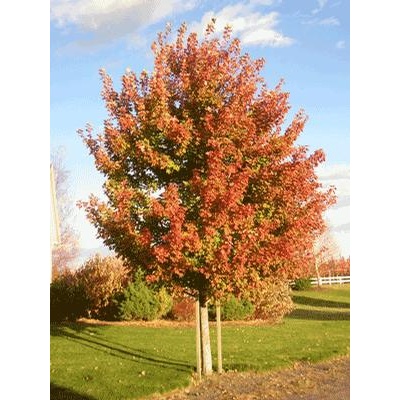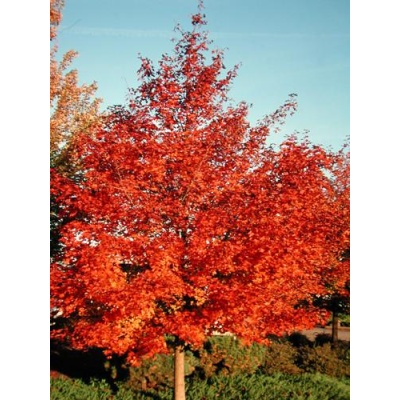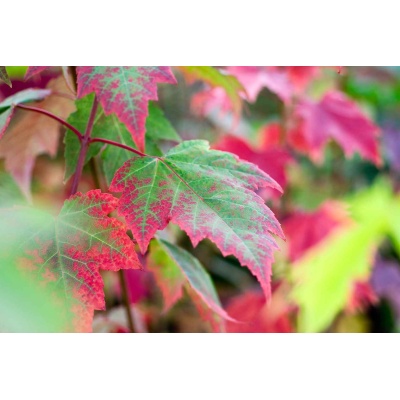Description
 Tsuga canadensis Canadian Hemlock
Tsuga canadensis Canadian Hemlock
Tsuga canadensis, commonly called Canadian hemlock or eastern hemlock, is a dense, pyramidal conifer of the pine family that is native to moist woods, moist slopes, rocky hillsides/ridges, wooded ravines, and stream valleys from eastern Canada south to Maine and Wisconsin and further south in the Appalachian Mountains to Georgia and Alabama. It grows to 40-75’ tall in the wild. This species is noted for having the smallest needles and cones in the genus. Flat sprays of lacy evergreen foliage give this tree a graceful form. Short dark green needles (to 9/16″ long) with two white bands beneath are arranged in two opposite rows. Needles are attached to twigs by slender stalks. Small, pendant, short-stalked, seed-bearing cones (to 3/4″ long) are tan-brown. Lower branches often dip toward the ground. Thick and ridged bark on mature trees is red-brown to gray-brown. State tree of Pennsylvania. No part of this tree is poisonous. The poisonous hemlocks (Circuta maculata and Conium maculatum) are herbaceous perennials in the parsley family.
Common Name: Canadian hemlock
Type: Needled evergreen
Family: Pinaceae
Native Range: North America
Zone: 3 to 7
Height: 40.00 to 70.00 feet
Spread: 25.00 to 35.00 feet
Bloom Time: spring
Bloom Description: non-descript
Sun: Part shade to full shade
Water: Medium
Maintenance: Low
Suggested Use: Hedge
Leaf: Evergreen
Other: Winter Interest
Tolerate: Deer, Heavy Shade, Black Walnut




Reviews
There are no reviews yet.